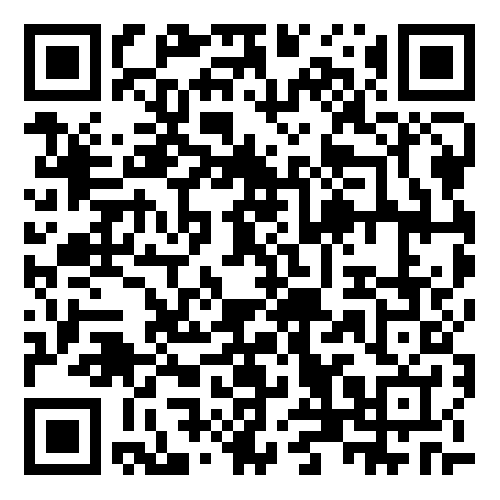
Understanding the Link Between Menopause and Muscle Aches
During menopause, a woman’s life changes significantly and experiences a number of emotional and physical changes. Though mood swings and heat flashes are among the more well-known symptoms that most people are aware of, one issue that frequently goes unrecognized is muscle stiffness.
Menopause may cause increased muscle soreness, stiffness, or even a discernible decrease in muscle mass. Let’s investigate the relationship between menopause and muscle health, explore the causes, and discover useful techniques for addressing muscular weakness and discomfort at this stage.
Comprehending Muscle Loss after Menopause: Why Does it Happen?
The changes in menopausal hormones have a substantial impact on several physiological processes, including the loss of muscle after menopause. Oestrogen level starts declining significantly once a woman hits her menopausal phase.
Oestrogen also affects muscular mass and strength. This hormone controls reproductive processes. Protein synthesis is aided by oestrogen and is necessary for the synthesis and maintenance of muscle tissue. Muscle loss results from the body’s diminished capacity to repair and grow muscle when oestrogen levels fall. This will gradually lead to menopause and muscle pain and weakness, making daily life activities more difficult.
Signs you need to know of muscle loss
- Weakening of muscles.
- Increased physical activity and fatigue.
- Loss of muscle firmness and tone.
- Struggling in performing strength-related tasks.
The Hidden Culprit: Menopause and Muscle Aches
Menopause and muscle aches may show up as anything from little discomfort to chronic pain. However, why do muscle problems accompany menopause? The main factor influencing muscle tissue directly is the decrease in oestrogen levels. Less collagen is created because of this oestrogen shortage, and collagen is necessary to keep muscles and joints flexible.
Increased inflammation is another typical menopausal side effect that can cause stiffness and discomfort in the musculoskeletal system. Hormonal imbalance combined with this inflammation makes things worse, menopause and muscle pain especially after physical action.
- General Muscle Pain: This is an experience of dull aching that is felt in other muscle groups as well.
- Local Muscle Pain: This pain is felt predominantly in either one or more muscle locations, such as the back, legs, and shoulders.
- Muscle Weakness: Muscles tend to feel worn out and tired because and bring difficulty in daily activities.
Menopause Muscle Pain and Weakness: When the Strength Fades Away
In addition to discomfort, menopause muscle pain in many women is a common factor, a combination that can significantly impact their daily lives. Muscle weakness after menopause can be attributed to two main factors: hormonal changes and a sedentary lifestyle. Although losing muscle mass is a natural aspect of aging, menopause’s lower oestrogen levels hasten this process.
The likelihood of injury and the frequency of aches and pains both rise with muscle degradation. Weak muscles not only make posture and balance worse but also increase the risk of falls and accidents.
Assessment of Weakness in Muscles
- Reduced strength and endurance.
- Slower recuperation following physical activity.
- Heightened pain in the muscles.
- Having trouble keeping good posture.
Causes of Menopause and Muscle Pain: Hormones are Not the Only Factor
Although oestrogen is important, menopause and muscle pain are caused by a variety of other reasons as well. A comprehensive comprehension of these fundamental causes can facilitate the creation of a tailored treatment plan for menopausal muscle pain.

Dehydration
Hormonal disbalances make the woman’s body dehydrated, also muscle tightness, pain, and cramping are more common in dehydrated muscles. Pain relief and maintaining the suppleness of muscles depend on maintaining proper hydration.
Sedentary Lifestyle
Due to fatigue and discomfort, leading an active lifestyle becomes more difficult after menopause. Conversely, a sedentary lifestyle might lead to weaker muscles and greater aches all the time. Regular exercise helps to avoid discomfort and muscular atrophy.
Stress and Lack of Sleep
Emotional downfall and inadequate sleep can be two big reasons for increased muscle pain, and both these are predominantly present during menopause. Excessive stress raises cortisol levels, which eventually causes muscle soreness and stiffness. Lack of sleep makes your body weak and prevents the body from repairing or renewing muscle tissue.
Menopause Muscle Pain Treatment: Knowing the Relief and Rebuilding Strength
Fortunately, menopause muscle pain can be efficiently managed and treated in several ways. To avoid more discomfort, the emphasis should be on both reducing pain and strengthening muscles.
Workouts and Strength Training
Muscle weakness might make this difficult for you, but consistent physical activity is one of the best ways to avoid muscle loss after menopause. Strength training exercises that will help you repair muscle mass and improve your overall strength include weightlifting and resistance band workouts.
Advice: Exercises with body weight or low weights should be gradually intensified as your muscles get stronger. Try and give a minimum of two days to strength training.
Exercises for Flexibility and Stretching
Stretching will help in the relief of menopause muscle pain. To release the tight muscles and enhance general mobility, gentle yoga or Pilates can be quite helpful.
Advice: Include stretching in your regular regimen. Pay particular attention to the shoulders, back, and legs as they are frequently the sites of muscular discomfort.
Nutritional Support
To have healthy muscles you need to adopt a healthy diet with all possible nutrients, especially magnesium, which you will get from green and leafy vegetables, almonds as well as seeds to encourage muscle relaxation. Consider Vitamin D supplements if your sunlight exposure is limited.
Advice: Do take advice from a healthcare professional before starting any supplement to ensure that it will suffice your needs and calm your pain.
Hydration
Having a sufficient intake of water is highly essential for healthy muscle function. Water helps prevent cramps and maintains muscle elasticity. If you exercise or it’s extremely hot outside, try to drink eight glasses of water or more each day.
Massage and Physical Therapy
Consider seeking professional assistance, such as physical therapy or therapeutic massage, for persistent menopausal muscular pain. These therapies can help ease the pain in certain locations, also bring relief to tensed muscles, and enhance relaxation.
Advice: A weekly massage or even getting it bi-weekly can greatly help in bringing agility and lessen muscle pain.
Holistic Methods to Menopause Muscle Pain Treatment
Many women get relief from traditional therapy as well as holistic and alternative remedies. These alternatives provide natural ways to lessen muscular soreness, while outcomes may differ.
Acupuncture
This traditional Chinese medicine has a reputation for reducing pain and enhancing general health. Acupuncture can assist in lessening menopause muscle pain and improving muscle flexibility by focusing on pressure points.
Herbal Supplements
Many people rely on herbal supplements, like valerian root, evening primrose oil, and black cohosh, to cure their menopause muscle pain. Before considering any herbal supplements, for yourself speak to your healthcare professional to understand the possible side effects of the drug.
Aromatherapy
Lavender, eucalyptus, and peppermint are among the most relaxing aromatherapy oils. Applying these oils to the aching muscles will help you reduce menopause muscle pain and give you a calm feeling.
Key Takeaways
Menopause welcomes a magnitude of transformations, bringing muscle pain and weakness along with it. Every woman must understand the potential symptoms of menopause and also curate a proper roadmap that will help them in overcoming the health issues. These transformative stages in a woman’s life can be very draining both emotionally and physically but adopting the right approaches and taking help from the healthcare professional will make your journey through this transitional period easier.
Citations
- https://www.ncbi.nlm.nih.gov/pmc/articles/PMC7710408/
- https://www.loyolamedicine.org/newsroom/blog-articles/menopause-related-musculoskeletal-pain
- https://journals.lww.com/pain/fulltext/9900/musculoskeletal_pain_among_chinese_women_during.608.aspx
- https://www.becomeclothing.com/pages/aches-and-pains-muscle-tension-and-the-menopause?gad_source=1&gclid=Cj0KCQjwmOm3BhC8ARIsAOSbapUxvebCKMNCKV8bBzOu5hTwcKq-2eJ38lmrfO03hCvqkQF6R7PcMeAaAotDEALw_wcB

Prativa Chatterjee





